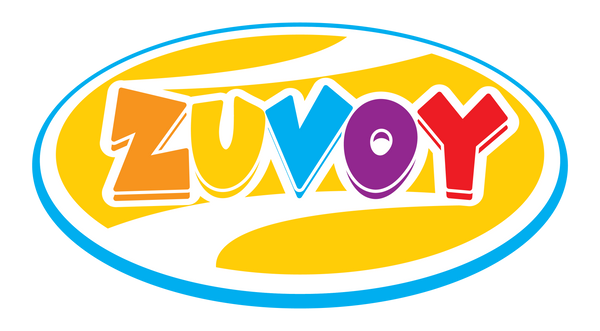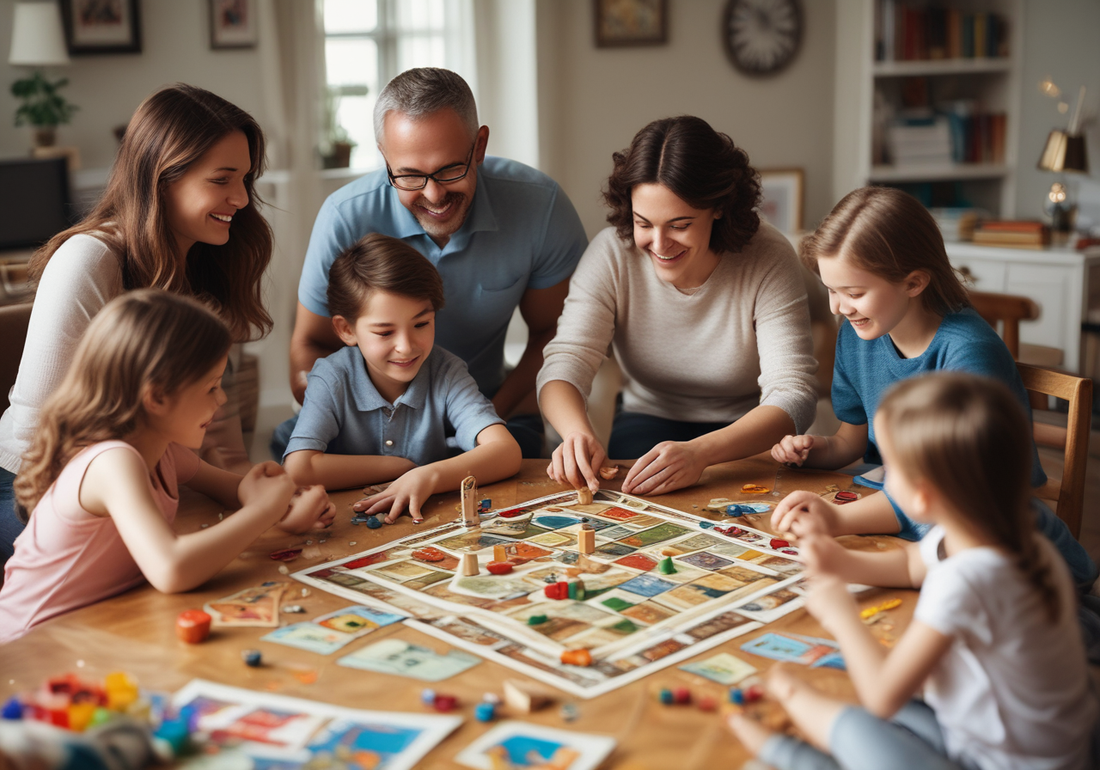Key Highlights
- Explore the importance of gratitude in children's development, fostering positive emotions and social behavior.
- Discover how gratitude board games can enhance children's well-being and emotional growth.
- Learn about top gratitude board games like "The Thankfulness Game" and "Gratitude Scavenger Hunt."
- Understand creative ways to integrate gratitude into game nights, including customizing classic games and DIY projects.
- Uncover the measurable impact of gratitude games on children's attitudes and behaviors, leading to a sense of appreciation and thankfulness.
Introduction
In a world that often values things over feelings, teaching kids about gratitude is very rewarding. A gratitude journal is helpful, but finding fun ways to show thankfulness, like discussing a birthday gift they received, works even better for young children. Using games and fun activities can help them feel good and learn to appreciate what they have. This way, they will grow into kind and thankful people.
Understanding the Importance of Gratitude in Children
 Gratitude means being thankful, and it is very important for a child's growth. But why should we teach this value to them early? It's more than just saying "thank you." It helps children appreciate the good things in their lives.
Gratitude means being thankful, and it is very important for a child's growth. But why should we teach this value to them early? It's more than just saying "thank you." It helps children appreciate the good things in their lives.
When kids learn gratitude from their grateful parents, they develop a positive way of thinking. This mindset helps them face problems with strength. It also helps them focus on what they have. This builds happiness and lessens the desire to compare themselves with others.
The Science Behind Gratitude and Well-being
Many studies show that gratitude and its benefits of gratitude is a powerful tool for improving mental health and well-being. This affects both children and adults. When we feel gratitude, our brains produce dopamine and serotonin. These are neurochemicals linked to happiness and reward.
This boost of positive emotions can create a chain reaction. It can improve sleep, lower stress, and make us see life more positively. Adding gratitude practices to our daily routines on a regular basis helps us shift our focus from negative thoughts to a greater awareness of the good things in life. This leads to lasting benefits for our mental and emotional health.
How Gratitude Shapes Social Behavior and Emotional Development
Gratitude is not just something we feel inside; it also affects how a child acts with others and grows emotionally. When kids are taught to notice and value the kindness of people around them, they learn empathy and build better relationships, cultivating a sense of genuine gratitude.
Showing gratitude helps them understand what others do for them, creating a feeling of being connected and included. In addition, having a sense of gratitude gives kids the emotional skills they need to face tough times and become stronger, promoting compassion in their interactions. This helps them have good social interactions and a better understanding of their own feelings.
Introducing Gratitude Through Play
Play is a great way to teach and grow gratitude in children. When kids engage in fun activities and interact with others, they naturally learn important values. This makes their learning enjoyable and easy to remember. Board games are especially good because they offer a setting where kids can play together. They get to experience friendly competition while also building crucial social skills, like taking turns and working together.
Choosing the Right Board Games for Different Age Groups
Choosing the right board games for kids is important. For young children and toddlers, pick games that have easy rules and bright colors. These games should help them recognize and name things they are thankful for. They might include matching pictures of things or actions to words of appreciation.
As kids get older, you can introduce games that have more complex ideas about gratitude. These games may involve doing acts of kindness or finding positive sides in tough situations. Playing together as a whole family with games that inspire sharing stories of gratitude and highlighting each other's good qualities can make the experience even better.
What is Role of Board Games in Fostering Gratitude?
Board games provide a fun way for kids to learn about gratitude. Instead of telling them directly, these games let children soak up gratitude in a playful setting. They can express gratitude, think about good times, and see what family members contribute during play.
While having fun, kids also learn important social skills. They get better at empathy and understanding other people’s feelings, which helps their grasp of gratitude. By adding gratitude-focused challenges, board games turn an ordinary game night into a special time. This strengthens family bonds and boosts emotional intelligence.
Top Gratitude Board Games for Kids
Are you ready to add a little thankfulness to your family game nights? Here are two great board games that will make your kids laugh while they think about the good things in their lives. These games provide fun and age-appropriate ways to teach and build the value of gratitude.
Game 1: The Thankfulness Game - Learning to Appreciate the Small Things
This fun and interactive board game helps the whole family learn about thankfulness. As players move on the board, they find prompts and challenges that start conversations about gratitude. The game has question cards that help kids express gratitude for simple things, like a sunny day, a favorite meal, or time spent with loved ones.
Players can use a gratitude jar with slips of paper in the game. Each player writes down something they are thankful for and puts it in the jar. By the end of the game, the jar shows a warm reminder of all the great things in their lives.
Game 2: Gratitude Scavenger Hunt - Exploring Thankfulness through Adventure
This fun game brings adventure and gratitude together. It takes family fun to a new level. In this game, players go on a scavenger hunt at home or in the neighborhood. They search for items or complete tasks related to thankfulness.
The game helps kids appreciate the world around them. They learn to notice simple joys and acts of kindness that often go unseen. Here are some ideas for scavenger hunt items or tasks:
- Find something blue that makes you smile.
- Do a chore for a family member without being asked.
- Give someone a genuine compliment.
- Write a thank-you note to someone who has helped you recently.
- Spend five minutes observing nature and write down what you appreciate about it.
Creative Ways to Incorporate Gratitude into Game Night
 You don't need special board games to bring gratitude into your family time. With some creativity, you can change classic games to include thankfulness. Adding a gratitude twist to your favorite games can turn a regular game night into a time to connect, think, and build stronger family ties.
You don't need special board games to bring gratitude into your family time. With some creativity, you can change classic games to include thankfulness. Adding a gratitude twist to your favorite games can turn a regular game night into a time to connect, think, and build stronger family ties.
Customizing Classic Board Games with a Gratitude Twist
Boost the fun and meaning of your favorite classic games by adding gratitude. Before each player takes their turn, ask them to share something they are thankful for. It can be as simple as "I'm grateful for this sunny weather" or "I'm grateful for my family."
You can also make gratitude part of the game's rules. For example, in games like "Candy Land" or "Chutes and Ladders," name certain spots as "Gratitude Squares." When a player lands on a "Gratitude Square," they draw a card from a gratitude jar or tell a story about something they appreciate.
DIY Gratitude Board Games - A Family Project
Making a DIY gratitude board game as a family can be a fun and rewarding time. Get everyone around the table. Let your creativity flow as you design a game that shows your family's special values and experiences. This family gratitude project will let you brainstorm ideas; you can also use sticky notes to create the game board, write gratitude prompts or challenges, and decorate with bright markers and other fun items.
This DIY project not only gives you a game that fits your family's interests, but it also helps you practice mindfulness and gratitude together. By making and playing the game, you will grow closer and create memories that last a long time.
Measuring the Impact of Gratitude Games on Children
The special moments during game night show a lot, but seeing how gratitude games affect kids is even better. When children practice gratitude, you can see them develop a more positive attitude. They learn to appreciate others more and become more aware of themselves. These games are not just for fun; they help teach kids important values. This shapes their character and improves their well-being.
Observing Changes in Attitude and Behavior
As you regularly include gratitude games in your family's routine, you may notice some lovely changes in your children's attitude and behavior, enhancing their understanding of gratitude. They might start showing gratitude more often, helping with chores, or being more thoughtful toward family members.
Grateful kids are usually more optimistic and strong. They can better face challenges and setbacks by focusing on the good side of things. This positive view helps them when they interact with others. They become more caring, kind, and understanding, which leads to better and happier relationships.
Feedback from Kids and Parents - Stories of Transformation
The true magic of gratitude games unfolds through the heartfelt stories shared by children and parents who have experienced their transformative power.
|
Who |
Feedback |
|---|---|
|
8-Year-Old |
"I love playing the Thankfulness Game! It reminds me of all the good things I have, like my dog." |
|
Parent |
"Since we started playing gratitude games, my kids are more willing to help around the house." |
|
10-Year-Old |
" I used to get upset when I lost at games, but now I realize it's just a game, and I'm grateful for the fun time." |
|
Grandparent |
"It warms my heart to see my grandkids showing so much gratitude toward each other and their parents." |
These stories of transformation highlight the profound impact gratitude games can have on individuals, families, and communities.
Conclusion
In conclusion, using board games to teach gratitude is a fun way to help children be thankful. These games help kids learn social skills and grow emotionally. You can make it even better by changing classic games or making your own DIY gratitude games. The changes in children's behavior and attitudes are amazing, with many parents and kids sharing their stories. Including gratitude during family game nights helps everyone, making it great for bonding. Start playing gratitude board games today and see the positive changes in how your children view life.
Frequently Asked Questions
What age group benefits most from gratitude board games?
Children of all ages can gain from gratitude board games. However, young children and toddlers can benefit even more. This age group enjoys playing together. It's a perfect time to teach them important ideas like gratitude and kindness in a fun way.
How often should we play gratitude games to see a positive change?
Playing gratitude games once or twice a week can help change how children think and act in a positive way. The Journal of Happiness Studies recommends practicing gratitude daily. However, starting small and keeping it a steady part of your routine can really help with mental health and well-being.

